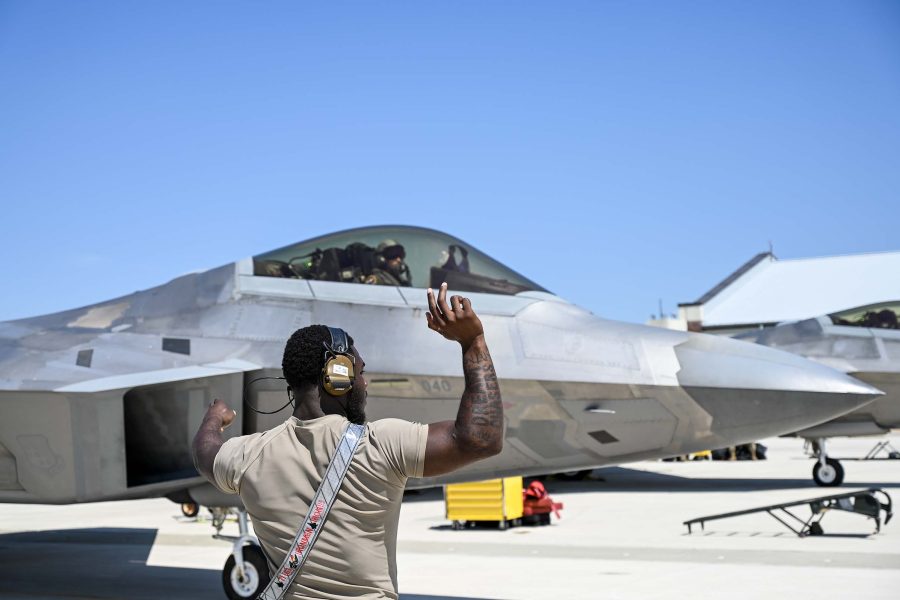Air Force student pilots flew their first F-22 training flights out of Joint Base Langley-Eustis earlier this month, culminating four years of work to relocate the F-22 schoolhouse to Virginia from Tyndall Air Force Base, Fla.
Six pilots enrolled in the F-22 Basic Flying Course made their first flights June 5, the 633rd Air Base Wing said in a release. The nine-month course is split between Tyndall and Langley, with three months of classroom and simulator training at Tyndall to start, and six months of flying at Langley.
“The whole intent behind the course is to not only be able to fly the F-22 but be able to effectively employ it,” Capt. Spencer Bell, a 71st Fighter Squadron flight commander, said in a statement. “We send people off to Combat Air Force squadrons, who are ready to deploy and ready to do the mission.”
Flight training consists of four phases,from basic flight maneuvers to advanced handling characteristics to air combat tactics. “The phases are designed to get the pilots from not knowing anything about the airframe to graduating and being our next air dominance professionals,” Bell said in a statement.
The 71st Fighter Squadron, to which the F-22s and students are assigned, was reactivated in January, succeeding the 71st Fighter Training Squadron. The 71st Fighter Generation Squadron stood up at the same time. With the 27th Fighter Squadron, 94th Fighter Squadron, and F-22 Raptor Demo Team, Langley already hosts roughly a third of the Air Force’s F-22 fleet.
The Air Force first announced plans to shift F-22 training from Tyndall to Langley in 2019, after Hurricane Michael destroyed much of the Florida base. As Tyndall has been steadily rebuilt as an “installation of the future,” the Air Force has started the process of bringing new F-35 fighters to the base.
The F-22 Formal Training Unit, meanwhile, was temporarily shifted to Eglin Air Force Base, Fla. In 2021, the Air Force approved Langley as the new permanent home following the completion of an environmental impact study. But even then, Air Combat Command said it was waiting on service leadership to finish its study into tactical aviation requirements, determining which and how many tactical aircraft it wants in the fleet moving forward.
In January, ACC commander Gen. Mark D. Kelly signed a memo formally directing the schoolhouse to stand up, and in March, Langley received its first two F-22s from Tyndall.
The arrival of student pilots at Langley marks the latest milestone in the transition process. Still more will come once several military construction projects are completed to support the new F-22 training mission.
The future of the F-22s the students are flying, however, remains uncertain—the Air Force wants to retire all 32 Block 20 F-22s now used for training, arguing they are too costly to maintain, and not rated for combat. But Congress last year specifically prohibited the service from retiring any F-22s until 2027 as part of last year’s National Defense Authorization Act, and lawmakers have given no indication they would repeal that proviso this year.
